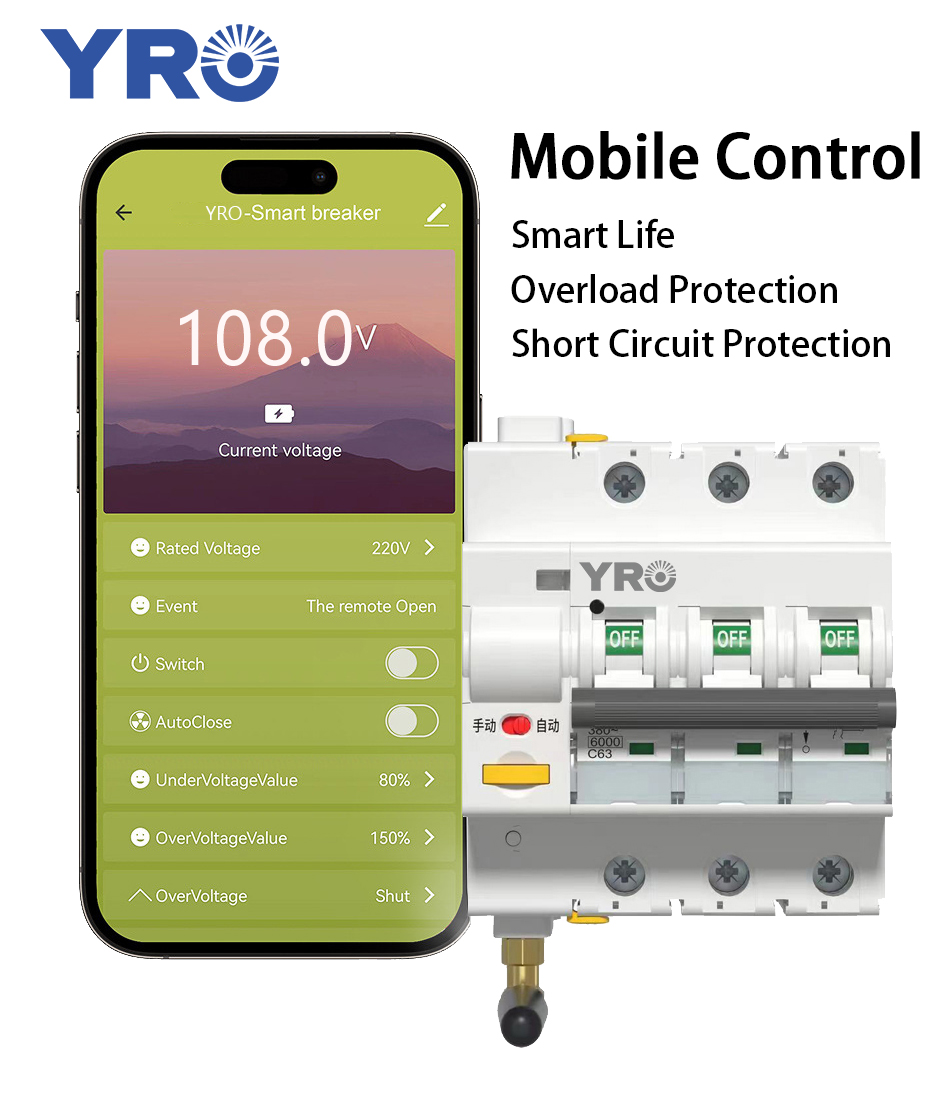As smart home and intelligent power management technologies become increasingly popular, Wi-Fi circuit breakers are emerging as essential electrical devices in modern homes and commercial spaces. Compared to traditional circuit breakers, Wi-Fi circuit breakers not only provide basic current protection but also add remote monitoring, control, and smart management features—greatly enhancing safety and convenience in power usage.
What Is a Wi-Fi Circuit Breaker?
The Wi-Fi circuit breaker, also known as a smart breaker, is a circuit control device designed with IoT technology. It operates through Wi-Fi signals, enabling remote control for turning circuits on and off.
The Wi-Fi circuit breaker combines the basic functions of a traditional breaker, such as overload and short circuit protection, with advanced features like smart sensing, cloud computing, and big data analysis. These innovations allow for real time monitoring of electrical parameters, remote control, and intelligent circuit management.
 How Does a Wi-Fi Circuit Breaker Work?
How Does a Wi-Fi Circuit Breaker Work?
The working principle of a Wi-Fi circuit breaker includes the following key aspects:
1、Current Monitoring and Protection
Like traditional breakers, the Wi-Fi circuit breaker has a current monitoring module that continuously detects changes in current and voltage. When the current exceeds safe limits (such as in overload or short circuit situations), the breaker automatically disconnects the circuit to prevent damage to electrical devices and ensure the overall safety of the system.
2、Wi-Fi Module and Remote Communication
The breaker’s Wi-Fi module connects to the home or office router via wireless network, allowing users to access and control the breaker remotely through a mobile app or computer client. Users can view the status of the breaker in real time, monitor current and voltage values, and control the circuit using their smartphones.
3、Data Recording and Analysis
Some high-end Wi-Fi circuit breakers come with energy monitoring and analysis features that record usage data and generate detailed energy consumption reports. Users can utilize this data to optimize their energy habits and allocate resources effectively, reducing overall energy consumption.
4、Smart Alarm Function
When the breaker detects abnormal currents (such as in a short circuit or overload) or excessive temperatures, it automatically disconnects power and sends an alert to the user’s phone or tablet via Wi-Fi. This ensures that users can receive timely notifications and take swift action, even when they are not on-site.
Are Wi-Fi Circuit Breakers Safe?
Every innovation has its pros and cons, and the Wi-Fi circuit breaker is no exception. The positive aspects include:
– Remote Control and Monitoring: The Wi-Fi circuit breaker allows users to control and monitor the circuit via remote devices like a mobile app or PC client. This remote operation does not compromise circuit safety; instead, it provides a convenient way to manage circuit status, helping to identify and address potential safety hazards promptly.
– Fault Warning and Protection: The Wi-Fi circuit breaker features real-time monitoring capabilities that can detect anomalies such as overload and short circuits, automatically cutting off power to protect the circuit and devices. While traditional breakers also have this fault warning and protection mechanism, Wi-Fi circuit breakers enhance this with remote communication, allowing users to receive fault information more quickly and take appropriate action.
The negative aspects include:
– Data Leakage Risk: The Wi-Fi circuit breaker needs to communicate with remote devices, and if the communication protocol has vulnerabilities or is unencrypted, it could lead to user data being stolen or tampered with.
– Malware Attacks: Attackers might send malware or viruses to the Wi-Fi circuit breaker, disrupting its normal functions or stealing sensitive information.
Prevention Measures: Regularly update the firmware and software of the Wi-Fi circuit breaker to fix known security vulnerabilities, and avoid using software or applications from untrusted sources.
Conclusion
Overall, the Wi-Fi circuit breaker excels in electrical safety and convenience, but network security and user awareness are equally important. By following best practices, promptly updating device firmware, protecting network security, and enhancing user awareness, the Wi-Fi circuit breaker can provide convenience while ensuring power safety.

 How Does a Wi-Fi Circuit Breaker Work?
How Does a Wi-Fi Circuit Breaker Work?